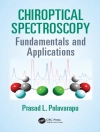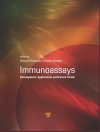Pharmaceutical Perspectives of Cancer Therapeutics covers a wide variety of therapeutic approaches including gene therapy, immunological therapy; cancer vaccines; strategy for solid tumors as well as for hematological cancers; methods to suppress tumor angiogenesis and metastasis; development and utilization of relevant animal models; introduction of new concepts such as cancer stem cells and new technologies, such as DNA and tissue microarrays; and RNA interference. In addition, clinical application, the development of DNA diagnosis biomarkers and cancer prevention, as well as the utilization of imaging in cancer therapy are also discussed. The use of synthetic carriers, such as lipids, polymers, and peptides for delivery and targeting of small molecules, proteins, and nucleic acids to cancer cells in vivo are discussed. Pharmaceutical Perspectives of Cancer Therapeutics also includes cancer therapy modality in surgery, chemotherapy, and radiotherapy, as well as in combination or multi-modality, giving our book a more focused view of cancer therapy.
Innehållsförteckning
Tumor Microvasculature and Microenvironment: Therapeutic Targets for Inhibition of Tumor Angiogenesis and Metastasis.- Anticancer Drug Development.- Tumor-Targeted Macromolecular Drug Delivery Based on the Enhanced Permeability and Retention Effect in Solid Tumor.- Multidrug Resistance in Solid Tumor and Its Reversal.- Targeting of Apoptosis Signaling Pathways and Their Mediators for Cancer Therapy.- Role of Telomerase in Cancer Therapeutics.- Polymeric Carriers for Anticancer Drugs.- Application of Nanobiotechnology in Cancer Therapeutics.- Receptor-Mediated Delivery of Proteins and Peptides to Tumors.- Protein Transduction Domain-Mediated Delivery of Anticancer Proteins.- Pharmaceutical Perspectives of Cancer Therapeutics: Current Therapeutic Uses of Monoclonal Antibodies.- Cancer Vaccines.- RNA Interference for Cancer Therapy.- Micro RNAs as Therapeutic Targets for Cancer.- Targeted Therapies for Malignant Brain Tumors.- The Complexity of the HIF-1-Dependent Hypoxic Response in Breast Cancer Presents Multiple Avenues for Therapeutic Intervention.- Cancer Stem Cells: Potential Mediators of Therapeutic Resistance and Novel Targets of Anti-cancer Treatments.- Image-Guided Photodynamic Cancer Therapy.- Functional Imaging of Multidrug Resistance and Its Applications.- Gene Expression Microarrays in Cancer Research.- Clinical Trials and Translational Applications in Cancer Therapy.
Om författaren
Yi Lu graduated with B.S. in Biochemistry from Fudan University in Shanghai, China in 1984, and Ph.D. in Biochemistry and Molecular Biology from University of Nebraska Medical Center, Omaha, NE, USA in 1992. He is currently an Associate Professor at the Departments of Pathology, Medicine, and Pharmaceutical Sciences, University of Tennessee Health Science Center, Memphis, TN, USA. His research interests include tumor angiogenesis and metastasis, gene therapy for prostate cancer and breast cancer, targeted gene expression, and exploration of novel apoptosis-inducing genes. He has more than 50 publications and holds five patents.
Ram I Mahato is a full time Associate Professor in the Department of Pharmaceutical Sciences at the University of Health Science Center Memphis. He was a Research Assistant Professor at the University of Utah Salt Lake City, Senior Scientist at Gene Medicine, Inc., The Woodland, TX, and postdoctoral fellow at the University of Southern California in Los Angeles, Washington University in St Louis and Kyoto University, Japan. He received his B.S. in Pharmaceutics from China Pharmaceutical University in 1989 and Ph D in Pharmaceutics and Drug Delivery from the University of Strathclyde in 1992. He is an author or co-author of 79 peer reviewed articles and book chapters. He has also edited/written three books and is a special features editor of Pharmaceutical Research and on the editorial board of the Journal of Drug Targeting, Expert Opinion on Drug Delivery, and Transplantation and Risk Management. His research includes delivery and targeting of small molecules, oligonucleotides, si RNA and genes.












